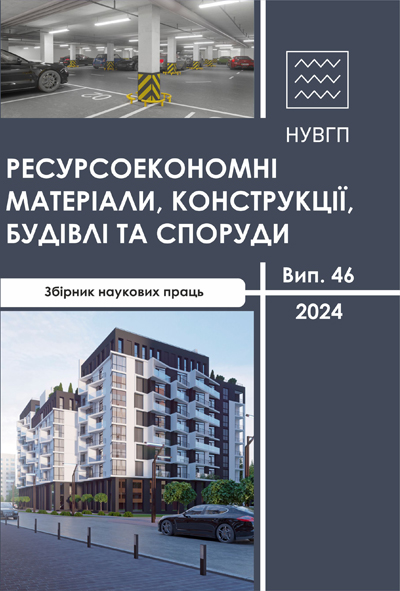THE INFLUENCE OF ACID ENVIRONMENTS ON THE DEFORMATION INDICATORS OF WOOD WITH DIFFERENT IMPREGNATION TIMES
DOI:
https://doi.org/10.31713/budres.v0i46.19Abstract
A detailed analysis of the literature on the study of physical and mechanical characteristics of hardwood and coniferous wood under the influence of various aggressive environments, including water, acid and alkaline, was carried out. The aim of the study is to determine the effect of aggressive environment on the deformability of birch and pine wood and compare it with the values at standard humidity. A methodology for experimental studies of lumber by axial compression along the fibres with a single short-term load under a rigid test regime in an aggressive environment was developed. The article presents the timing of impregnation of hardwood and coniferous species (birch and pine) in aggressive environments, in particular in hydrochloric (15%), acetic (9%) and lactic acids (40%). These tree species are grown in the forests of the Volyn region. The trees were approximately 60 years old at the time of testing. The samples were manufactured in accordance with current standards. The wood tested before being impregnated with various liquids had a standard moisture content of 12%. The wood was naturally impregnated without additional stimulation for 7, 14, 28 and 180 days, respectively. The penetration of liquids into the thickness of the samples was carried out in a vessel in a horizontal position with complete immersion in various solutions. Each solution had access to all sides of the prisms. The total number of prisms tested was 78. Experimental studies were carried out on a servo-hydraulic testing machine STM-100. The deformation rate of the prisms was 1.5 mm/min. The results of studies of deformability indicators (critical and residual deformations) are presented, taking into account the coefficient of aggressiveness of the medium. It is established that the deformation parameters of solid pine and birch wood increase depending on the period of impregnation with various aggressive environments. It was found that the deformability of the studied wood species changes significantly only during the first month of acid impregnation. Over the next 5 months of impregnation, the deformability indicators remain almost unchanged.

